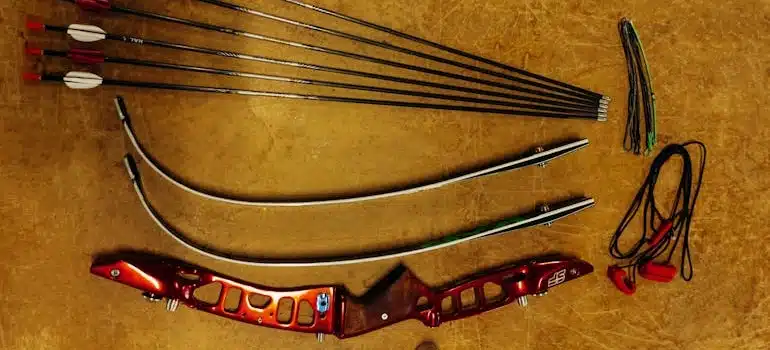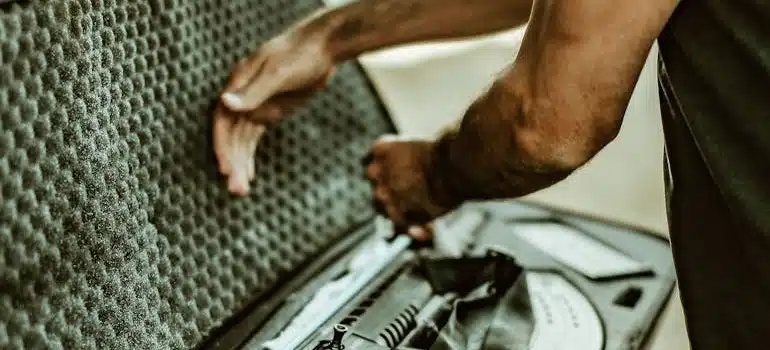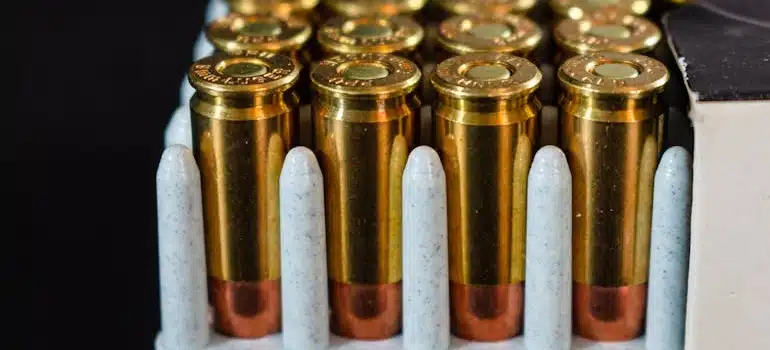Proper ways to pack and move hunting gear
Hunting gear is valuable, often regulated, and sometimes dangerous if mishandled. A small mistake during packing or transport can lead to damaged equipment or legal trouble. That’s why it’s important to know exactly how to handle each item, especially when moving in or out of Florida, where laws can differ from other states. This guide walks you through everything you need to consider if you pack and move hunting gear, as the right steps make a big difference. If your relocation involves a long drive or out-of-state move, some moving companies in Florida offer services designed for transporting outdoor gear. These options can make the process easier and help protect your equipment during transit.
Risks of moving hunting gear
Rifles, bows, ammunition, knives, and scent-control clothing all require different packing methods. Some items involve legal restrictions, while others just need secure containers. Without a clear plan, it’s easy to misplace, damage, or improperly store your gear. Poor packing can shorten the life of your equipment, and incorrect handling may lead to legal issues, especially when flying or crossing state lines.
How to transport hunting gear when moving
Moving your gear from Miami by car or truck may seem simple, but it’s easy to get something wrong. States vary in how they treat firearm transport. While federal law gives some protection during interstate travel, local rules can still apply, and interstate moving companies in Miami know them best.
Review legal requirements before packing
Always check the laws for every state you’ll pass through. The Bureau of Alcohol, Tobacco, Firearms and Explosives (ATF) states that firearms must be:
- Unloaded
- Locked in a hard-sided container
- Inaccessible to the driver or passengers
- Stored separately from ammunition
This applies even if you’re not stopping in that state. Some places have more restrictive rules about magazine capacity, ammunition types, or required locks. Visit official state websites or use trusted legal guides for up-to-date info.

Prepare your gear for safe and legal transport
Before packing, unload every firearm. Double-check chambers and magazines. Insert chamber flags if available. Lock each gun in a padded, hard-sided case with foam inside. Secure the case with TSA-approved padlocks or integrated locks.
Pack ammunition in a separate, labeled box. Keep it in original packaging or a dedicated ammo case. Do not store it with the firearm. Store both items out of sight in your trunk or rear compartment.
Organize other hunting items carefully
Not all gear is regulated, but a lot of it is sharp, heavy, or fragile. Knives, optics, decoys, traps, blinds, and scent-control tools all need careful packing. Wrap sharp items and mark boxes in detail.
Create a gear inventory using a spreadsheet or an app. Write down serial numbers, case labels, and box contents. This helps with moving insurance, security, and setup in your new home.
If your move includes a long drive or multiple stops, don’t leave gear in plain sight. Locked containers and tinted windows help reduce risk.
For large moves, some licensed moving companies offer secure packing and inventory management. Choose a provider that understands both safety and compliance when handling your hunting gear.
How to fly with hunting gear
Flying with hunting gear is possible, but it comes with strict rules. Airlines follow TSA guidelines and may also add their restrictions. To avoid delays or penalties, you need to prepare carefully and follow all requirements.
Know TSA rules for firearms and ammunition
The Transportation Security Administration (TSA) allows firearms in checked baggage only. You must:
- Unload all firearms
- Place them in a hard-sided case
- Lock the case with a key or combination lock
- Declare the firearm at the ticket counter
Ammunition must be packed separately. Most airlines allow up to 11 pounds in checked baggage. Keep it in fiber, wood, or metal boxes that prevent movement or accidental ignition. Original packaging is ideal. Never pack firearms or ammunition in carry-on bags. Even replica firearms or toy guns must be checked.
Follow airline-specific policies as you pack and move hunting gear
Each airline may have extra rules beyond TSA requirements. Some limit the number of firearms per case. Others have weight limits or charge additional fees. Always check your airline’s sports equipment policy before your flight.
If you’re traveling internationally, rules become stricter. Some countries ban certain types of firearms or require advance import permits. Contact your destination’s embassy or customs office before booking your trip.
Pack optical equipment like scopes and binoculars in padded cases, and secure them with lens caps to prevent scratches and impact damage.
Pack hunting bows and accessories correctly
Bowhunters must also follow airline guidelines. Bows and arrows must go in checked luggage. Use a reinforced bow case with interior padding. Secure sharp points with foam or protective tips.
Accessories like broadheads, scent blockers, or cleaning kits should also go in checked bags. Many of these items are not allowed in carry-ons, even if they seem harmless.
Prepare early to avoid airport issues
Arrive at the airport at least two hours early. Declare your firearm or bow at the counter—do not try to check it at the kiosk. Be ready to unlock your case if security asks to inspect it.
When you pack and move hunting gear, keep it all labeled and organized. Carry copies of any permits or licenses in case authorities request proof.
For gear you don’t need right away, consider shipping it separately. Some moving companies offer secure ground transport for hunting gear, which can reduce airport stress and avoid airline restrictions.
How to pack hunting rifles for a move
Rifles are often the most sensitive—and legally restricted—items in a hunter’s gear set. Packing them properly helps prevent damage and ensures you comply with federal and state laws.
Use a hard-sided, lockable case
The Transportation Security Administration (TSA) mandates that firearms must be transported in a hard-sided container that is locked. Only the passenger should retain the key or combination to the lock, unless TSA personnel request it to ensure compliance with regulations.
Unload and inspect each rifle
Before packing, ensure that each rifle is unloaded. Remove any ammunition and verify that the chamber is empty. It’s also advisable to clean and oil your firearms to protect against rust and corrosion during transit.
Pack ammunition separately
Ammunition should be packed in a separate, secure container. It must be stored in fiber (such as cardboard), wood, plastic, or metal boxes specifically designed to carry ammunition. These containers should prevent movement and accidental ignition.
Label and inventory your firearms
Before you pack and move hunting gear, maintain a detailed inventory of your firearms, including make, model, and serial number. This information should be kept separate from the firearms themselves and can be useful for insurance purposes or in case of loss.

Consider professional moving services
Some full-service moving companies in Florida are equipped to handle the transportation of firearms. They may require a physical inspection of each firearm before loading and will record serial numbers to ensure accountability.
However, it’s important to note that while movers may transport firearms, they typically do not transport ammunition due to safety regulations. Similarly, Florida storage regulations often prohibit ammunition and, in some cases, firearms in storage units—especially those not designed for secure or climate-controlled access.
The best way to pack hunting clothes and supplies
Hunting clothing and supplies require careful packing to stay scent-free, dry, and ready for use. It often includes bulky layers, waterproof fabrics, and scent-sensitive materials. To protect it all during a move, use adequate packing materials and techniques that preserve structure, block moisture, and keep odors out:
- Fold garments tightly but not too tightly: Don’t over-compress insulated clothing or camo jackets, as it can damage the material. Instead, fold neatly along seams and avoid sharp creases.
- Layer with purpose: Place heavier gear like bibs or jackets on the bottom of each container. Lighter layers go on top. Keep gloves, hats, and face masks in mesh pouches or small bags inside the main bin.
- Use scent-control liners: Place scent-proof liners (or trash bags sprayed with scent elimination spray) inside bins before adding clothing. This creates a barrier and protects fabrics from external odors.
- Bag boots separately: Wrap boots in plastic bags or place them in dedicated boot bags. Stuff the insides with paper or clean socks to help maintain shape and prevent odor buildup.
- Avoid gaps in the container: Fill empty spaces with soft items like neck gaiters or base layers. This prevents clothes from shifting and getting wrinkled or crushed.
- Secure the lid tightly: After packing, lock the bin with clasps or tape. Add a waterproof label with the gear type and season (e.g. “early fall set”).
- Double-bin if needed: If you’re packing gear for long-distance moves or expect rough handling, use a bin-in-bin method: pack gear in a sealed bag first, then place that inside a durable hard bin.
Packing this way helps your gear arrive in good condition—dry, organized, and scent-neutral. If you’re moving in humid areas like Miami or traveling a long distance, consider using moisture absorbers or having professionals pack outdoor gear with breathable, sealed materials.
Clean and dry everything before packing
Before packing, wash all hunting clothes using scent-free detergent. Avoid fabric softeners, as they can leave residues that wildlife might detect. After washing, air-dry the clothing completely to prevent mold and mildew during storage.
Use airtight containers for storage
Store your clean, dry hunting clothes in airtight plastic totes or vacuum-sealed bags. This method protects clothing in storage against moisture, pests, and unwanted odors. Adding natural scent wafers or baking soda can help maintain a neutral smell.
Organize gear by category
Separate your gear into categories such as base layers, outerwear, gloves, and accessories. Label each container accordingly. This organization simplifies unpacking and ensures you can quickly locate specific items when needed.
Protect boots and footwear
Clean and dry your hunting boots thoroughly. Store them upright in a separate plastic container to maintain their shape and prevent odors. Placing baking soda inside the boots can help absorb any residual moisture and smells.
Keep gear separate from chemicals or food
Do not pack hunting clothes next to fuel, oils, cleaning products, or food containers. These can transfer unwanted odors that ruin scent-controlled fabrics. Keep hunting gear in its own sealed bins or in a separate section of the moving truck.
How to store hunting gear
Proper storage of hunting gear extends its lifespan and ensures it’s ready for the next season. Follow these steps to keep your equipment in top condition.
Clean gear properly before storage
To make sure your hunting equipment lasts, you need to clean it thoroughly before packing it away. Dirt, moisture, and scent residue can all cause damage over time. Proper cleaning not only prevents mold and corrosion but also keeps your gear ready for the next season.
Here are basic cleaning tips for common items:
- Clothing: Wash with scent-free detergent. Avoid fabric softeners. Air dry completely.
- Boots: Brush off all debris. Use waterproofing spray or leather conditioner as needed.
- Backpacks and soft gear: Empty all pockets. Shake out dirt. Spot-clean with mild soap.
- Knives and tools: Wipe clean. Apply a light coat of oil to prevent rust.
- Optics: Use a microfiber cloth. Avoid household cleaners. Store with lens caps on.
- Electronic gear: Remove batteries. Wipe surfaces clean with a dry cloth.
Once everything is clean and dry, you can move on to organizing and packing your gear. Dry conditions and sealed containers are key to keeping it safe in long-term storage.
Use appropriate storage containers to pack and move hunting gear
Pack clothing in airtight bins or vacuum-sealed bags to block out moisture and pests. Label each container based on season or type of gear to stay organized. Keep smaller items (like calls, optics, and tools) in clearly marked boxes. For electronics, always remove the batteries before storage to prevent corrosion.

Maintain a climate-controlled environment
South Florida’s humidity can damage hunting gear if it’s not stored properly. Keep your gear in a cool, dry place away from direct sunlight. Avoid storing equipment in garages or sheds where temperature and humidity fluctuate, as this can damage materials over time.
If your new Miami home lacks suitable space, consider booking climate-controlled Miami storage facilities. Reputable moving companies can help you find secure storage options that protect your hunting gear from moisture, pests, and temperature changes.
Make every move safe for your hunting gear
Hunting gear isn’t like other equipment; it’s often high-value, tightly regulated, and built for specific conditions. That means you can’t pack it the way you’d pack kitchen tools or camping supplies. You need a detailed plan that covers safety, legality, and long-term protection.
If your move involves firearms, review federal transport rules through the ATF’s official guidance. Some items may also fall under the National Firearms Act (NFA), which requires prior approval.
A little planning on how to pack and move hunting gear now saves you time, money, and frustration later. With the right steps, your hunting gear will be protected every mile of the move.
